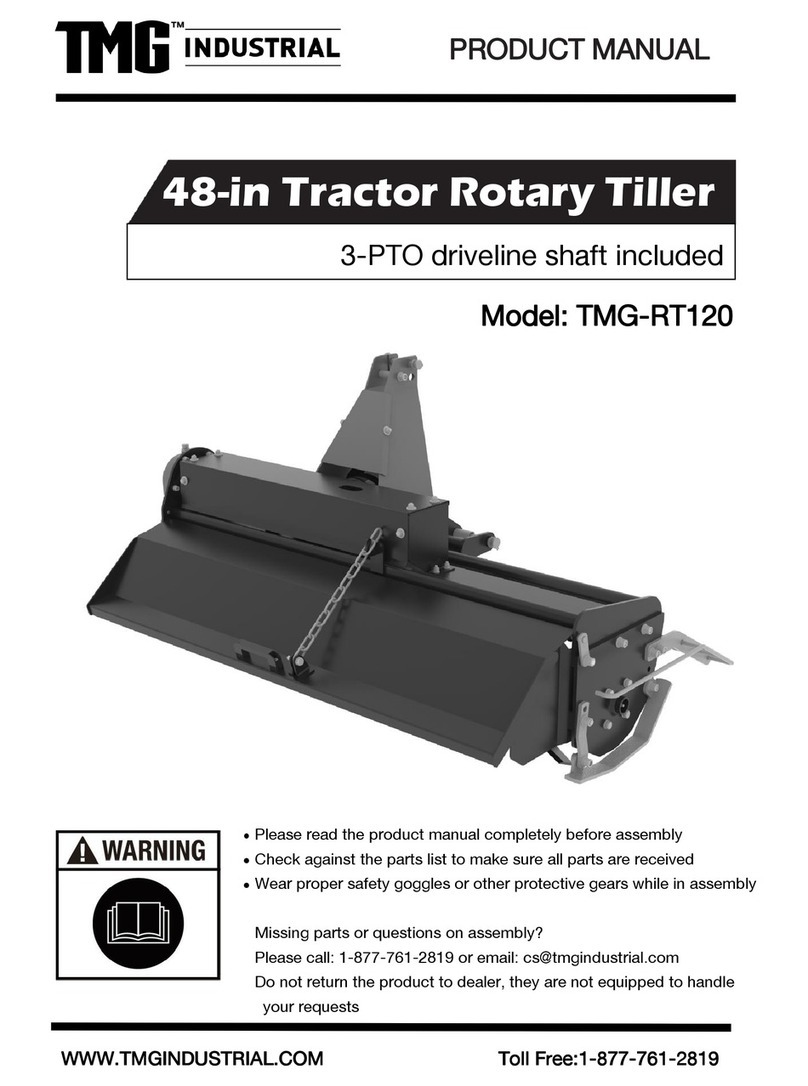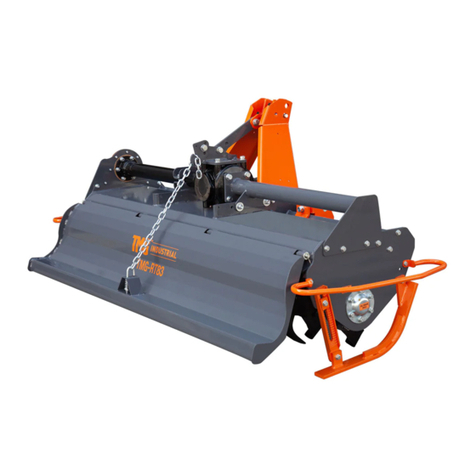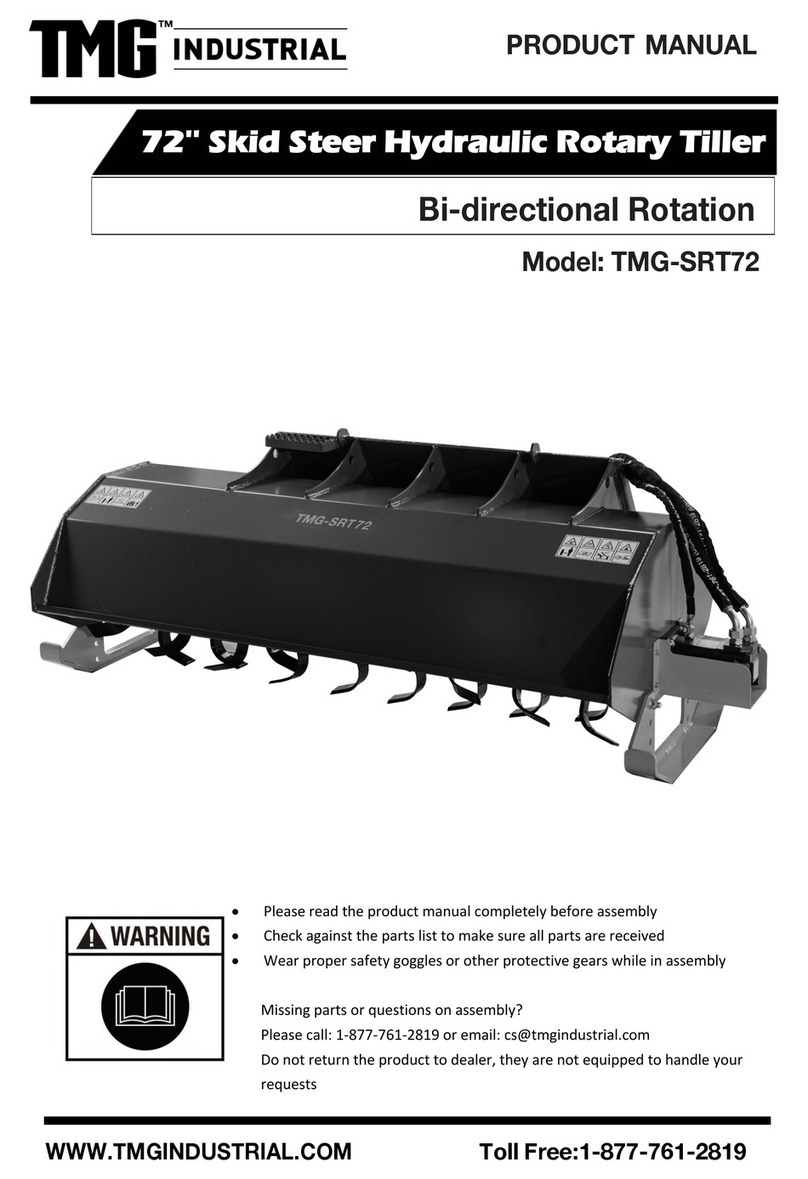
WWW.TMGINDUSTRIAL.COM
2 / 22
Toll Free:1-877-761-2819
Important Safety Information
Safety at All Times
Careful operation is your best assurance against an accident. All operators, no matter how much experience they may have,
should carefully read this manual and other related manuals, or have the manuals read to them, before operating the power
machine and this implement.
l Thoroughly read and understand the “Safety Label” section. Read all instructions noted on them.
l Do not operate the equipment while under the influence of drugs or alcohol as they impair the ability to safely and
properly operate the equipment.
l The operator should be familiar with all functions of the tractor and attached implement, and be able to handle
emergencies quickly.
l Make sure all guards and shields appropriate for the operation are in place and secured before operating the implement.
l Keep all bystanders away from equipment and work area.
l Start tractor from the driver’s seat with hydraulic controls in neutral.
l Operate tractor and controls from the driver’s seat only.
l Never dismount from a moving tractor or leave tractor unattended with engine running.
l Do not allow anyone to stand between tractor and implement while backing up to implement.
l Keep hands, feet, and clothing away from power-driven parts.
l While transporting and operating equipment, watch out for objects overhead and along side such as fences, trees,
buildings, wires, etc.
l Do not turn tractor so tight as to cause hitched implement to ride up on the tractor’s rear wheel.
l Store implement in a safe and secure area where children normally do not play. When needed, secure implement against
falling with support blocks.
Look for the Safety Alert Symbol
The SAFETY ALERT SYMBOL indicates there is a potential hazard to personal safety and extra precaution must be taken.
When you see this symbol, be alert and carefully read the message that follows it. Hazard control, and accident prevention are
dependent upon the awareness, concern, prudence, and proper training of personnel involved in the operation, transport,
maintenance, and storage of equipment.
Be Aware of Signal Words
A signal word designates a degree or level of hazard seriousness. They are:
DANGER: Indicates a hazardous situation that, if not avoided, will result in death or serious injury.
WARNING: Indicates a hazardous situation that, if not avoided, could result in death or serious injury.
CAUTION: Indicates a hazardous situation that, if not avoided, may result in minor or moderate injury.
Be Aware of Special Notices
Special notices are intended to point out important and helpful information that should be followed. They are usually placed
inside a box. They are:
IMPORTANT: Indicates that equipment or property damage could result if instructions are not followed.
NOTES: Indicates supplementary explanations that will be helpful when using the equipment.
Safety Precautions for Children
Tragedy can occur if the operator is not alert to the presence of children, Children generally are attracted to implements and
their work.
l Never assume children will remain where you last saw them.
l Keep children out of the work area and under the watchful eye of a responsible adult.
l Be alert and shut the implement and tractor down if children enter the work area.
l Never carry children on the tractor or implement. There is not a safe place for them to ride. They may fall off and be run






























